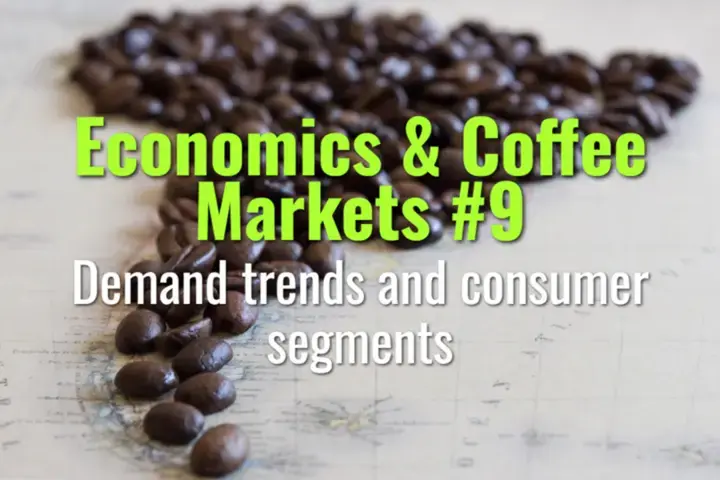Demand trends and consumer segments
How demand trends shape the global coffee market and how different consumer segments influence pricing, product development, and café strategies.
- Coffee Basics Nerds
- 2 min read
Article 9 of 12 in Economics & Coffee Markets/

Global Demand Trends
- Rising Consumption: Coffee consumption continues to grow globally, with strong demand in emerging markets (Asia, Eastern Europe).
- Specialty Growth: Consumers increasingly pay premiums for traceable, high-quality, and sustainable coffees.
- Convenience: Growth in RTD (ready-to-drink), capsules, and cold brew.
- Health & Lifestyle: Rising interest in low-caffeine, functional, or plant-based coffee beverages.
- Sustainability: Demand for ethically sourced and eco-friendly packaging influences purchasing decisions.
Consumer Segments
- Commodity/Price-Driven Consumers:
- Buy instant or bulk supermarket coffee.
- Price-sensitive, low brand loyalty.
- Mainstream Café Consumers:
- Visit chain cafés (e.g., Starbucks, Costa).
- Expect consistent quality, convenience, and comfort.
- Specialty Enthusiasts:
- Prioritize quality, freshness, and origin stories.
- Willing to pay higher prices.
- Often brew at home with V60, AeroPress, or invest in grinders.
- Experimenters & Trend-Seekers:
- Attracted to new drinks (nitro cold brew, cascara, coffee cocktails).
- Often younger demographic, influenced by social media.
- Ethical Buyers:
- Prioritize Fairtrade, Organic, Rainforest Alliance, or direct trade.
- Seek transparency in sourcing.
- Functional/Health-Oriented Consumers:
- Prefer decaf, low-acid, mushroom-infused, or fortified coffee.
- Growing niche segment.
Implications for the Market
- Blends vs Single-Origin: Different segments value consistency vs uniqueness.
- Pricing Strategies: Commodity consumers expect discounts, specialty drinkers accept premiums.
- Product Innovation: Cold brew, RTD, and flavored drinks align with younger consumer demand.
- Storytelling: Transparency and ethical marketing resonate with higher-tier segments.
Summary
Coffee demand is diversifying: from commodity price-driven buyers to specialty enthusiasts and health-conscious consumers. Understanding these segments and trends helps producers, roasters, and cafés tailor offerings, pricing, and messaging for long-term growth.